An experiment into when lightroom begins clipping warnings
Jan 5, 2021 16:32:17 #
So it doesn't seem to be what I expected. What I did was shot a color card normal exposure in bright overcast outdoors. Adjusted the white balance with the eyedropper and made no other changes. I then pushed the whites and the exposure up until I got partial highlight clipping in the white square. Then repeated with other color squares, each time looking for the point where the clipping warnings were about half of the square.
Jan 5, 2021 16:36:52 #
Lightroom uses percent RGB in the eyedropper, so I looked at what was happening there as the blinkies appeared. One thing I think I think I concluded was that lightroom need one color to be at 99.8% to show the clipping warnings. You can see the lab values under the histogram also, but I don't think it is using luminosity to trigger the warnings.
Jan 5, 2021 16:37:44 #
You might want to explain in more detail and / or provide an example of the topic being raised.
Jan 5, 2021 16:42:25 #
_
As shot
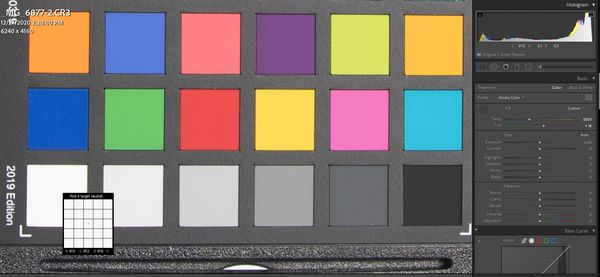
(Download)
Partial appearance of blinkies in white square
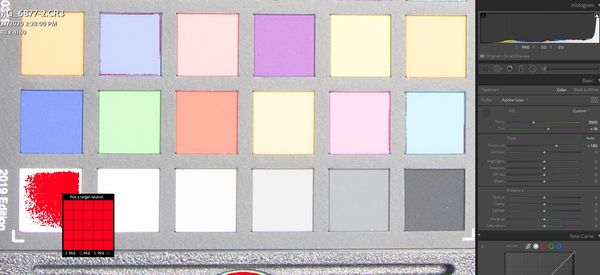
(Download)
Partial appearance of blinkies in blue square
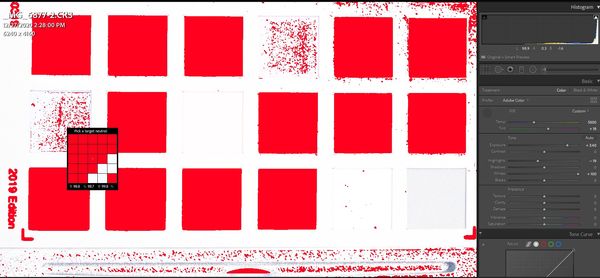
(Download)
Partial appearance of blinkies in red square
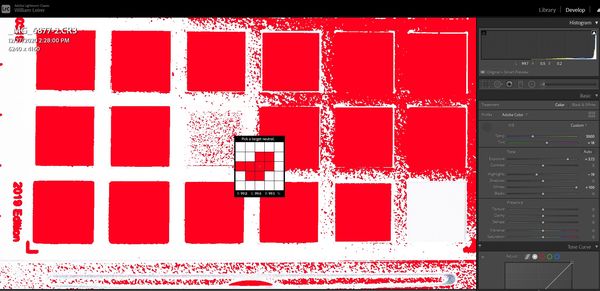
(Download)
Partial appearance of blinkies in green square
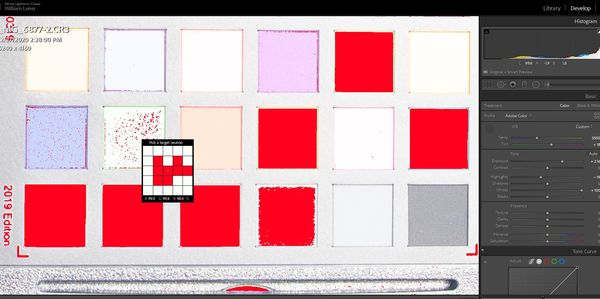
(Download)
Jan 5, 2021 16:45:19 #
So I set out with the question of whether lightroom needs two channels to be blown before blinking. I previously tested my camera and found out that was the case in my in camera blinkies. but apparently lightroom doesn't need two channels the way the camera does.
Jan 5, 2021 20:23:20 #
a6k
Loc: Detroit & Sanibel
A few months ago I downloaded pics like that from "Imaging Resource". I used a shot from a Nikon D850, a Canon 5Dm3 and a Sony A7RIII. I also used similar from a Sony 𝜶6500. I own a 𝜶6500 so I was able to use my own shots and compare to those from the internet. I used raw images, by the way.
The shots were, as far as I could tell, properly exposed and professionally done (except perhaps my own).
I used CaptureOne and RawDigger and FastRawViewer. I also examined tiny spots in the images using the Mac's "Digital Color Meter" app. I saw pretty much what you saw and it was easy to find the point at which the over exposure indication begins to appear and then where it is completely covering the square. As it happens, at least for my cameras and perhaps for almost all, the green channels get blown first if the subject is white.
This approach can be used to calibrate the over exposure indicator in the camera (or at least it can with my two Sony cameras). Sony uses a "Zebra" indicator and my cameras offer presets but also two custom settings. In other words, this approach, almost the same as yours, was used to double-check and refine my custom Zebra settings.
I found this approach to be very helpful in getting very accurate, consistent warnings in real-time, real life.
This is the long way of both endorsing your approach and suggesting some further, easy experimentation as well as practical uses.
The shots were, as far as I could tell, properly exposed and professionally done (except perhaps my own).
I used CaptureOne and RawDigger and FastRawViewer. I also examined tiny spots in the images using the Mac's "Digital Color Meter" app. I saw pretty much what you saw and it was easy to find the point at which the over exposure indication begins to appear and then where it is completely covering the square. As it happens, at least for my cameras and perhaps for almost all, the green channels get blown first if the subject is white.
This approach can be used to calibrate the over exposure indicator in the camera (or at least it can with my two Sony cameras). Sony uses a "Zebra" indicator and my cameras offer presets but also two custom settings. In other words, this approach, almost the same as yours, was used to double-check and refine my custom Zebra settings.
I found this approach to be very helpful in getting very accurate, consistent warnings in real-time, real life.
This is the long way of both endorsing your approach and suggesting some further, easy experimentation as well as practical uses.
Jan 5, 2021 20:39:24 #
a6k wrote:
A few months ago I downloaded pics like that from ... (show quote)
I did some informal experimenting with the blinkies in my camera, Canon RP. I found I could not force the blinkies to blink until two colors were blown. One color no matter how far over didn't trigger it. Usually not an issue unless shooting something like a deep red flower, then you don't know the red channel is over the line without watching the estimate in the individual color histograms. But I don't think lightroom behaves that way, I think just one channel blown is enough to trigger it.
If you want to reply, then register here. Registration is free and your account is created instantly, so you can post right away.
